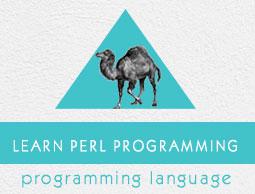Perl - Formats
Perl uses a writing template called a 'format' to output reports. To use the format feature of Perl, you have to define a format first and then you can use that format to write formatted data.
Define a Format
Following is the syntax to define a Perl format −
format FormatName =
fieldline
value_one, value_two, value_three
fieldline
value_one, value_two
.
Here FormatName represents the name of the format. The fieldline is the specific way, the data should be formatted. The values lines represent the values that will be entered into the field line. You end the format with a single period.
Next fieldline can contain any text or fieldholders. The fieldholders hold space for data that will be placed there at a later date. A fieldholder has the format −
@<<<<
This fieldholder is left-justified, with a field space of 5. You must count the @ sign and the < signs to know the number of spaces in the field. Other field holders include −
@>>>> right-justified
@|||| centered
@####.## numeric field holder
@* multiline field holder
An example format would be −
format EMPLOYEE =
===================================
@<<<<<<<<<<<<<<<<<<<<<< @<<
$name $age
@#####.##
$salary
===================================
.
In this example, $name would be written as left justify within 22 character spaces and after that age will be written in two spaces.
Using the Format
In order to invoke this format declaration, we would use the write keyword −
write EMPLOYEE;
The problem is that the format name is usually the name of an open file handle, and the write statement will send the output to this file handle. As we want the data sent to the STDOUT, we must associate EMPLOYEE with the STDOUT filehandle. First, however, we must make sure that that STDOUT is our selected file handle, using the select() function.
select(STDOUT);
We would then associate EMPLOYEE with STDOUT by setting the new format name with STDOUT, using the special variable $~ or $FORMAT_NAME as follows −
$~ = "EMPLOYEE";
When we now do a write(), the data would be sent to STDOUT. Remember: if you are going to write your report in any other file handle instead of STDOUT then you can use select() function to select that file handle and rest of the logic will remain the same.
Let's take the following example. Here we have hard coded values just for showing the usage. In actual usage you will read values from a file or database to generate actual reports and you may need to write final report again into a file.
#!/usr/bin/perl
format EMPLOYEE =
===================================
@<<<<<<<<<<<<<<<<<<<<<< @<<
$name $age
@#####.##
$salary
===================================
.
select(STDOUT);
$~ = EMPLOYEE;
@n = ("Ali", "Raza", "Jaffer");
@a = (20,30, 40);
@s = (2000.00, 2500.00, 4000.000);
$i = 0;
foreach (@n) {
$name = $_;
$age = $a[$i];
$salary = $s[$i++];
write;
}
When executed, this will produce the following result −
===================================
Ali 20
2000.00
===================================
===================================
Raza 30
2500.00
===================================
===================================
Jaffer 40
4000.00
===================================
Define a Report Header
Everything looks fine. But you would be interested in adding a header to your report. This header will be printed on top of each page. It is very simple to do this. Apart from defining a template you would have to define a header and assign it to $^ or $FORMAT_TOP_NAME variable −
#!/usr/bin/perl
format EMPLOYEE =
===================================
@<<<<<<<<<<<<<<<<<<<<<< @<<
$name $age
@#####.##
$salary
===================================
.
format EMPLOYEE_TOP =
===================================
Name Age
===================================
.
select(STDOUT);
$~ = EMPLOYEE;
$^ = EMPLOYEE_TOP;
@n = ("Ali", "Raza", "Jaffer");
@a = (20,30, 40);
@s = (2000.00, 2500.00, 4000.000);
$i = 0;
foreach (@n) {
$name = $_;
$age = $a[$i];
$salary = $s[$i++];
write;
}
Now your report will look like −
===================================
Name Age
===================================
===================================
Ali 20
2000.00
===================================
===================================
Raza 30
2500.00
===================================
===================================
Jaffer 40
4000.00
===================================
Define a Pagination
What about if your report is taking more than one page? You have a solution for that, simply use $% or $FORMAT_PAGE_NUMBER vairable along with header as follows −
format EMPLOYEE_TOP =
===================================
Name Age Page @<
$%
===================================
.
Now your output will look like as follows −
===================================
Name Age Page 1
===================================
===================================
Ali 20
2000.00
===================================
===================================
Raza 30
2500.00
===================================
===================================
Jaffer 40
4000.00
===================================
Number of Lines on a Page
You can set the number of lines per page using special variable $= ( or $FORMAT_LINES_PER_PAGE ), By default $= will be 60.
Define a Report Footer
While $^ or $FORMAT_TOP_NAME contains the name of the current header format, there is no corresponding mechanism to automatically do the same thing for a footer. If you have a fixed-size footer, you can get footers by checking variable $- or $FORMAT_LINES_LEFT before each write() and print the footer yourself if necessary using another format defined as follows −
format EMPLOYEE_BOTTOM =
End of Page @<
$%
.
For a complete set of variables related to formating, please refer to the Perl Special Variables section.


